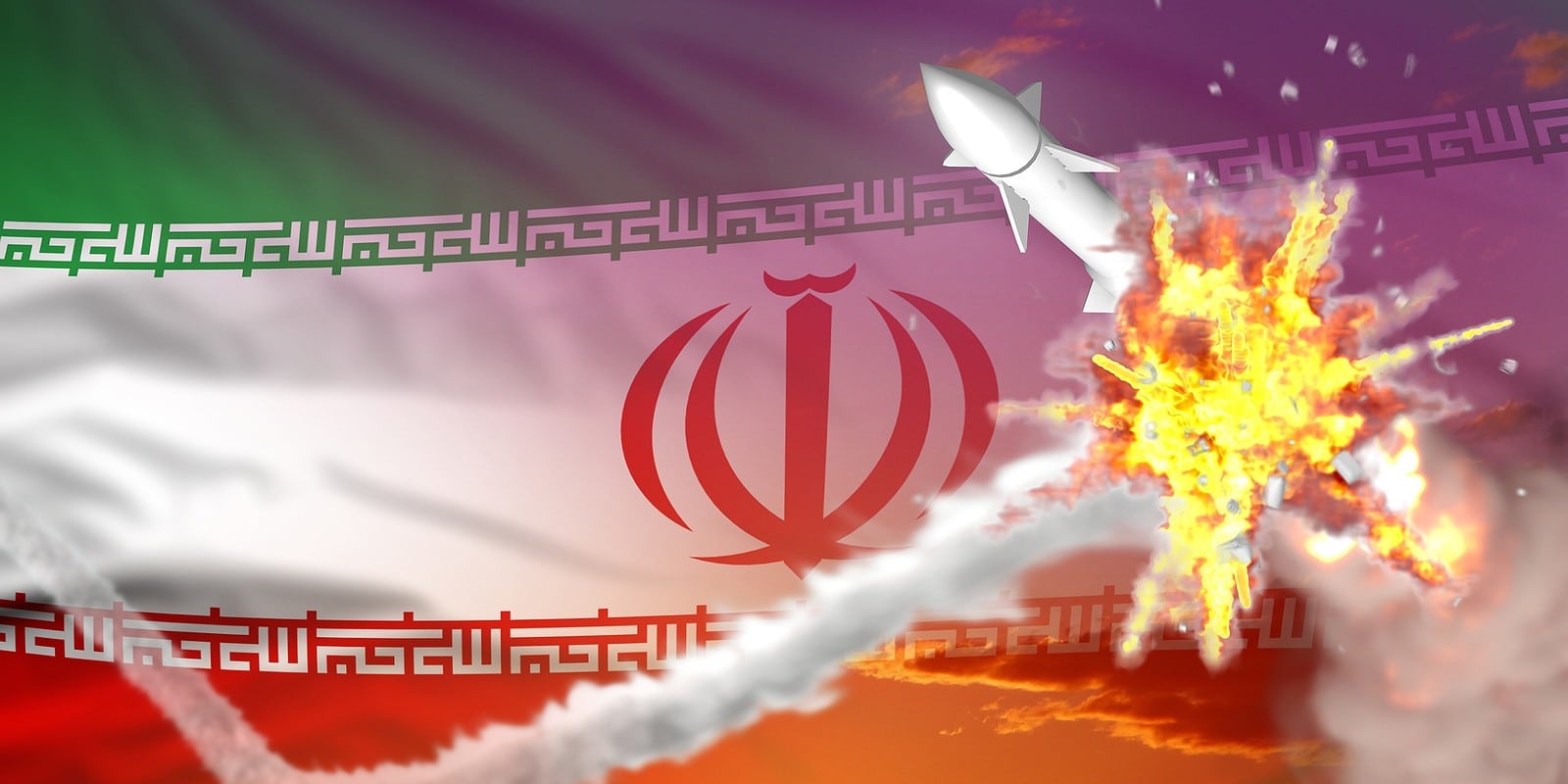The launch of Iran’s first solid propellant space rocket is highly significant.
On February 2, 2008 Iran became the ninth space-faring nation when it successfully orbited its first satellite, the Omid,” by its newly developed “Safir” space launch rocket, an adaptation of the “Shahab 3” military ballistic missile. Ever since that milestone, February 2 is celebrated annually as Space Technology Day. Iran’s Space Agency which is formally – if not actually – in charge of Iran’s space programs, makes extra effort to commemorate the day by a new space launch. Sometimes it is successful, and the world is treated to a new Iranian satellite in space. More often it is not, and Space Technology Day turns into a series of conferences and television programs describing the glorious past and painting an even more glorious future.
This year, the world was treated to the debut of Iran’s first solid propellant space rocket. This is highly significant. Unlike liquid propellant rockets that need to be fueled before launch, solid propellant rockets are launch-ready at any time. Hence, most of the world’s ballistic missiles use solid propellants. The new Iranian space rocket was launched into a suborbital trajectory from Semnan space port. The new space launcher was dubbed “Zuljanah” after the mythical horse of Husain Ibn Ali, the first martyr in the cause of Shia Islam who died in 680 AD. More than millennia later, his faithful mount was honored by an emblem of a winged horse painted on the side of the new rocket.
The first disclosure of the existence of a new space launcher was made by Iran’s Mehr news agency on February 9, 2020 when it announced the completion of the design of a new solid propellant Space Launch Vehicle (SLV) dubbed “Zuljanah” scheduled to make its first flight in June of that year (Fabian Hinz, Arms Control Wonk, February 14, 2020). Later that year, in August 2020, Iran’s Defense Minister Hatami referred to “Zuljanah, a solid propellant SLV” that is “the same size and shape as the Simorgh liquid propellant SLV with the first launch schedule to fall within the current (Iranian year)” which ends in March 2021 (Norbert Rugge). He also mentioned that the Zuljanah will be capable of being launched from mobile launchers. The new Zuljanah lifted off from it launch pad on February 2, 2021, seven months later than the Mehr news agency announcement but still within the current Iranian year, as promised by Hatami. No satellite was inserted into orbit. Some reports said that the rocket reached an altitude of 320 km. This might have signified a failure to reach earth orbit. More likely, no satellite launch was intended. Rather, this first flight of the new space launcher was a preliminary suborbital flight test to check out flight characteristics and the launch sequence rather than an audacious leap into a fully fledged space shot.
The Zuljanah is Iran’s first solid propellant SLV, sporting the largest solid propellant motors yet revealed by Iran. The released video clips show a smooth takeoff from a launch table equipped with a large jet deflector firmly fixed to the launch pad’s surface. The video clip shows the rocket shortly before takeoff, with the launch support tower already reclining out the rocket’s way. An enthusiastic announcer intones a long introduction, invoking God’s name and counting down from ten to zero. Curiously enough, nothing happens at the count of zero. Unfazed, the announcer switches from count-down to count-up, with ignition of the first stage occurring at zero plus ten seconds. Was it a malfunction? It is hard to say. Perhaps ignition at zero plus ten was preplanned, for unknown reasons. In any case, the video shows a smooth liftoff and steady climb into a curving trajectory. After approximately sixty seconds, there is a fadeout and the video ends. There is no indication whether the second stage separated or ignited. This may indicate that the second stage was not ignited in this test, either intentionally or because of some malfunction; otherwise, the Iranians would have highlighted the stage separation and second stage ignition in their released video. Interestingly enough, this time no transmissions from onboard cameras were released, as the Iranians love to do with most of their ballistic missiles and space launcher flights. The impression is that the whole exercise was dictated by the symbolic deadline of February 2, rather than by the need to maximize the effectiveness of the flight test. The Iranians launched whatever was ready by that date, which might have been a rocket with a live first stage but dummy upper stages, with no time for frills like onboard cameras.
The Zuljanah is a three-stage SLV with the first two stages comprising of large solid propellant rocket motors, each probably containing an estimated 20 tons of propellant, and a smaller, liquid propellant third stage, seemingly a carryover from the earlier Safir first generation SLV that had already launched four satellites into low earth orbit. The Zuljanah looks a bit odd, with a “bulge” in its middle. The need for this ungainly “bulge” stems from the interesting fact that the Zuljanah is using outdated technology for controlling its direction of flight, rather than the cutting edge, up-to-date flight control technology displayed by the IRGC in its own “Salman” rocket motor last year. Other throwbacks to older technology are evident, mainly in the retaining of steel for the rocket casing, rather than lighter and stronger composite materials that also featured in the IRGC’s already mentioned “Salman” as well as in their shorter-range ballistic missiles. The obsolete technology is probably the reason for the rather low performance of the “Zuljanah,” which according to Iran’s Space Agency release weighs 52 tons at takeoff but can loft to orbit only 200 kg., which is less than one half of what a rocket this size should be able to lift into earth orbit.
The fact that Iran’s latest space launcher is not benefitting from Iran’s latest rocket technologies is remarkable. Usually, spacefaring nations exploit the best and latest technologies in their satellite launchers. There could be several different reasons for this curious lacuna. Perhaps the new IRGC technologies have not yet been upsized to fit the much larger Zoljanah’s propulsion system, which sports the largest ever solid propellant motors unveiled by Iran. In other words, the Zoljanah’s rocket motors may be too big for the IRGC’s capacity to manufacture composite material rocket casings and flexible nozzles that control the missile’s direction by tilting the rocket exhaust gases. At the same time, there is strong evidence that the IRGC has already tested much larger solid rocket motors in its secret Shahrood facility. More plausibly, the denial of advanced technologies to Iran’s civilian space program could be a result of the rivalry between the IRGC’s own space program (that came to light in April 2020) and the civilian space agency. (See “Iran’s Space Program,” 10.09.2020). The IRGC may regard its technologies as proprietary and bar its civilian rival from using them.
The “Zoljanah” represent a departure from Iran’s hitherto cautious policy of not provoking the West by brandishing its capability to produce missiles that could reach Europe. Iran’s second generation SLV, the liquid propellant “Simorgh,” is not a good candidate for producing a derivative intermediate range ballistic missile (IRBM) or intercontinental ballistic missile (ICBM), due to its complexity and the cumbersome method of its launching. The solid propellant “Zuljanah” is a different story. A ballistic missile using its two huge solid propellant stages could probably deliver payloads of 500 kg. or so to ranges of 4000 km. or more – enough to reach all of Europe. In other words, the Zuljanah is a candidate precursor for a ready to launch, survivable IRBM aimed at the core members of the EU. Moreover, the official Iranian release mentioned that the “Zoljanah” could be fired in the future from mobile launchers; a capability more appropriate for a military IRBM than a peaceful civilian space launcher. The impression is that the Iranian leadership is stretching thin the cover story of it “civilian” space program, in tandem with stretching its compliance with the Nuclear Deal, to accumulate bargaining chips for its forthcoming negotiation over the US return to the nuclear deal. At this time, Iran’s nuclear transgressions are reversible, and can be bargained away against the lifting of Trump-imposed sanctions. Similarly, Iran’s abrogation of its own self imposed upper limit of 2000 km. on its missiles range, as implied by the Zuljanah’s potential to be turned into an IRBM, can be easily reversed as an implicit concession to European sensitivities.
Iran’s Space Agency (ISA) used the occasion of the Space Technology Day to unveil its road map to the future of its space program. And a glorious future it is – if the ISA is taken at its word. The “Zuljanah” is the ISA’s third generation space launcher, after the Safir (which already orbited four satellites) and the Simorgh (which has failed to orbit any satellite to-date). The next in line will be the “Sahrir,” a giant three-stage solid propellant SLV with an estimated take off weight of almost 160 tons, capable of lofting 700 kg. to an orbit 1,000 km. above earth’s surface. But even this giant will be dwarfed by what comes next: the “Sorus 1,” a 700-ton behemoth with a cluster of external solid propellant boosters. This behemoth will pale in turn against the “Sorus 2,” with a takeoff weight of 1,300 tons. This will almost match today’s largest space launcher, the US ” Falcon Heavy” made by Ellon Musk’s legendary Space X company. No timetable for this ambitious program has been offered, but one can surmise that the mind boggling “Sorus1” and “Sorus 2” will not be seen in on a launch pad in the near of even the intermediate future.
That may not be the case of the next space launcher in line after the “Zuljanah,” the 160 ton solid propellant “Sahrir.” From its published image, it has a diameter of two meters. One of the last pictures of Hassan Mughadem, the father of Iran’s missile and space programs, show him talking to a group of his assistants, with a two-meter-wide solid rocket propellant in the background. Is it a coincidence? Perhaps not. Moghadem met his death in an explosion during what appeared to be the production of a huge solid propellant rocket motor. This was part of a secret IRGC space program called “Gaem” that aimed to create a two-stage solid propellant space launcher with a diameter of two meters. It seems that that ISA hopes to utilize the “Gaem” rocket motors for its next satellite launcher. Will the IRGC allow the civilian ISA to use to its own proprietary rocket motors? In any other country the answer would be a definite “yes,” but with the inter-organizational rivalries in Iran, as seen by the denial of IRGC advanced technologies to the civilian ISA, the answer remains in doubt.
Be it as it may, any of the giant Sahrir stages could be an excellent basis for a solid propellant Iranian ICBM. As argued in the previously mentioned paper (“Iran’s Space Program”), Iran’s space program is in part a coverup for long range ballistic missiles that go beyond the self-imposed range of 2000 km. The launching of the “Zuljanah,” and the ensuing revelation of Iran’s next satellite launcher, may have provided a limited yet significant preview of its road map towards building of global range missiles that can reach both Europe and the US. Unlike their North Korean friends who brandish oversized ICBMs in garish nighttime parades, the more sophisticated leaders of Iran are astute in not yet showing their hand. They are just allowing the world a quick glimpse of what they can do, if and when they decide to become a global power.
JISS Policy Papers are published through the generosity of the Greg Rosshandler Family.
Photo: Bigstock









 - בניית אתרים
- בניית אתרים